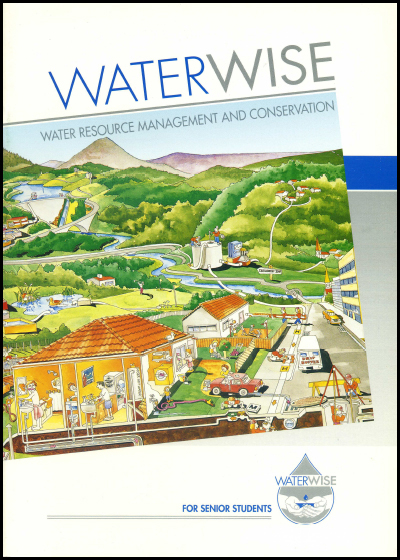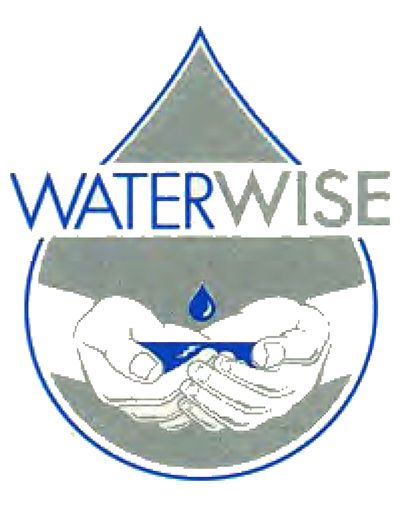WaterWise Student's Textbook

ISBN : 0 7242 5161 8
Published Date : 23 January 1993
Product Code : F 62P 1993
Format : pdf file for download
By Bob Moffatt
Wet Paper publications non-commercial school licence
The publisher and author/s of this pdf file grant to the school a revocable, non-exclusive, non-transferable right and licence to use the content, exercises, lab and field work lesson notes within the school for educational purposes only.
Yearly record keeping
To ensure fair payment is made to collecting societies, educational institutions are to record the digital ISBN above.
- To do this go to the school office and ask the IT department or whoever looks after digital book licences to record the ISBN in the school digital library licence catalogue.
Copyright
Except as permitted by the Copyright Act 1968 (Cth), you may not reproduce any of the contents of this publication, without the written permission of the copyright owner.
The title to, and intellectual property rests with the publisher's author/s, illustrators, photographers and design consultants and nothing in the agreement should be construed as transferring those rights to the school.
Educational exemption
There are exemptions under the Act that allow educational and government use of text, images and music scores for educational purposes.
These exemptions are in Part VB of the Copyright Act 1968 (Cth), where you are entitled to reproduce or communicate 10% of the words or one chapter from this file for educational use within your school. If you wish to reproduce or communicate MORE than 10% contact the copyright owner.
For more information, see www.copyright.com.au and www.copyright.org.au.
Teachers Information
Rationale
We all depend upon land, water and biological resources. The way we manage these resources is of vital importance to the economy and to our quality of life.
It is becoming increasingly clear that we need a better way of managing our natural resources to maintain essential ecologicl processes and to meet the needs of current and fututre generations.
Our lifestyles place many demands on water and other natural resources. Community altitudes are changing from the 'develop at all costs' concept to one of using water and land in a combination of ways. This multi-use process will protect biological diversity and maintain essential ecological processes and life support systems.
Community expectations of natural resource management are changing. If these resources are going to be available in the future, they need to be well managed. Progressive land and water users are aware of the need for careful and responsible use of these resources.
Development is no longer seen as beneficial for its own sake and water resource planners now take into consideration the views of various community based interest groups and water users.
Water resource management considers urban, industrial, agricultural and recreation usage, together with the requirements of the environment. Management of the environment considers the requirements of the aquatic environment and the maintenance of down stream ecosystems in order to preserve the visual character and conservation of our natural and cultural heritage.
The community is also becoming more aware of environmental issues such as erosion, salinity, the effects of agricultural chemicals, pollution and insensitive development. The complexity of these issues has led to the evolution of integrated land and water management.
Water has many uses for groups of people in the broad community. Each of these groups has different ways of using water to suit its lifestyle. People may use water for urban, industrial, rural and recreational purposes.
Contents
Introduction
Chapter 1 Water in the environment
Chapter 2 Water treatment and use
Chapter 3 Reclaiming water
Chapter 4 Water conservation
Glossary
Index
Acknowledgements
Wet Paper Publications would like to thank the following for their assistance in the design and trialling of this module:
The author wishes to thank the following for their assistance in the writing of this book. Peter Stannard, Jan Oliver, Sue Cerate, Bill Stapp, Joan Camilleri, Madonna Davidson and Martin Bullocks.
Thanks to the staff of the Brisbane City, Albert Shire, Gold Coast City Council.and the Queensland Department of Primary Industries. Thanks also to the staff and students at Coombabah, Burnside and Benowa High School, Hillcrest and Somerset Colleges for participitating in the trialling of activities.
Finally thanks to editor Rosemary Lancaster.
Photographic credits
Tim Ryan, Simpson Limited, Hoover Australia Pty Limited, James Hardie Industries, Nylex Gardenia, Bill Stapp and Mark Mitchell.



